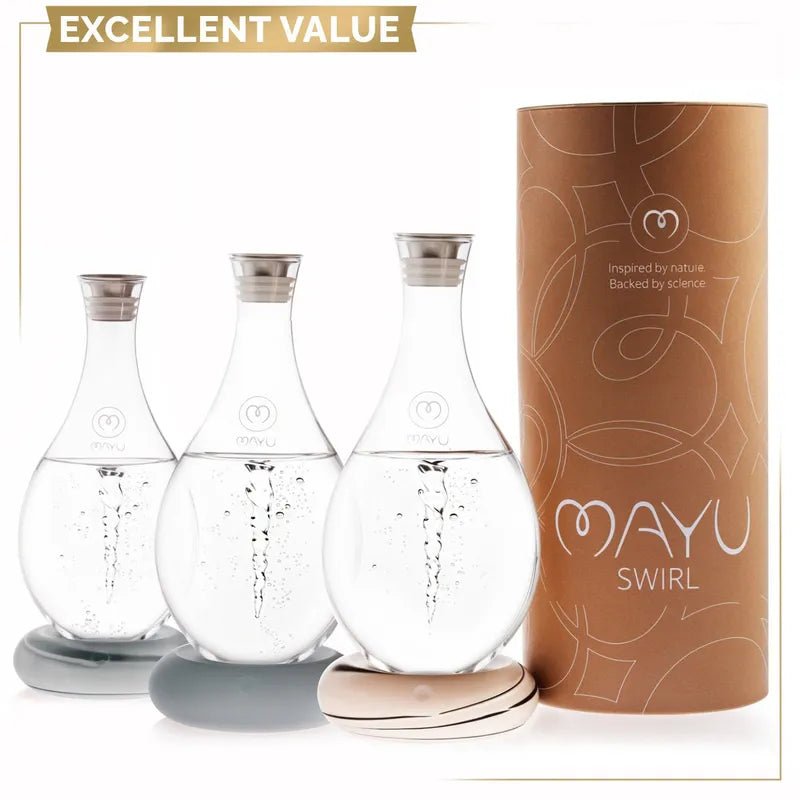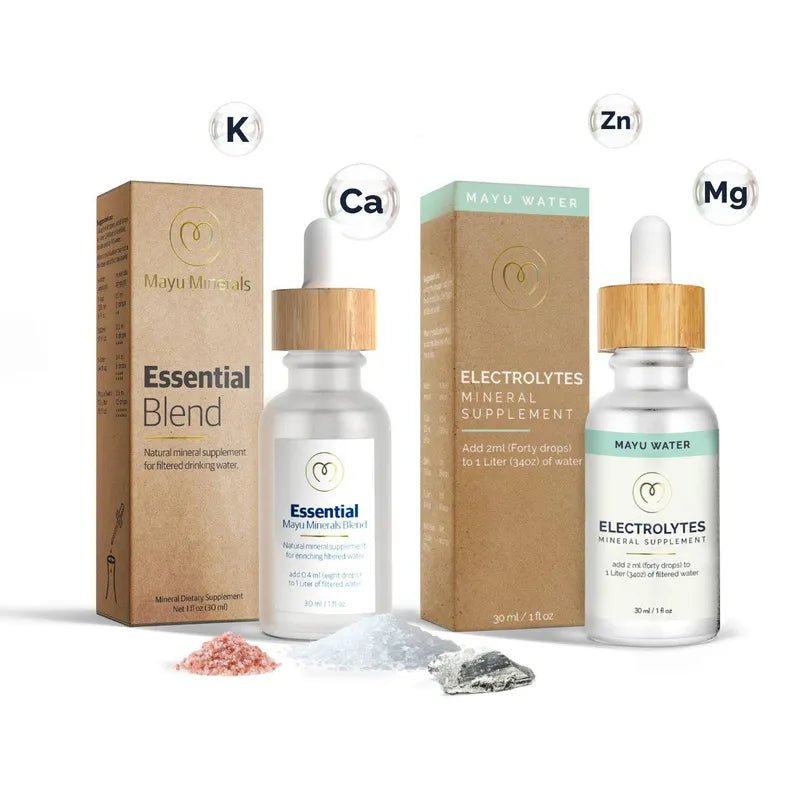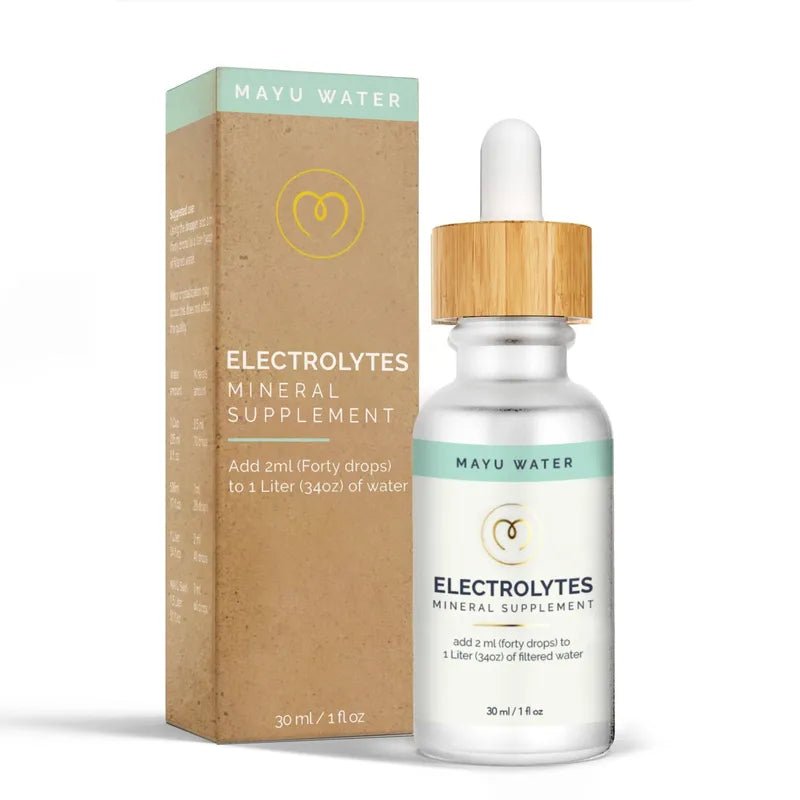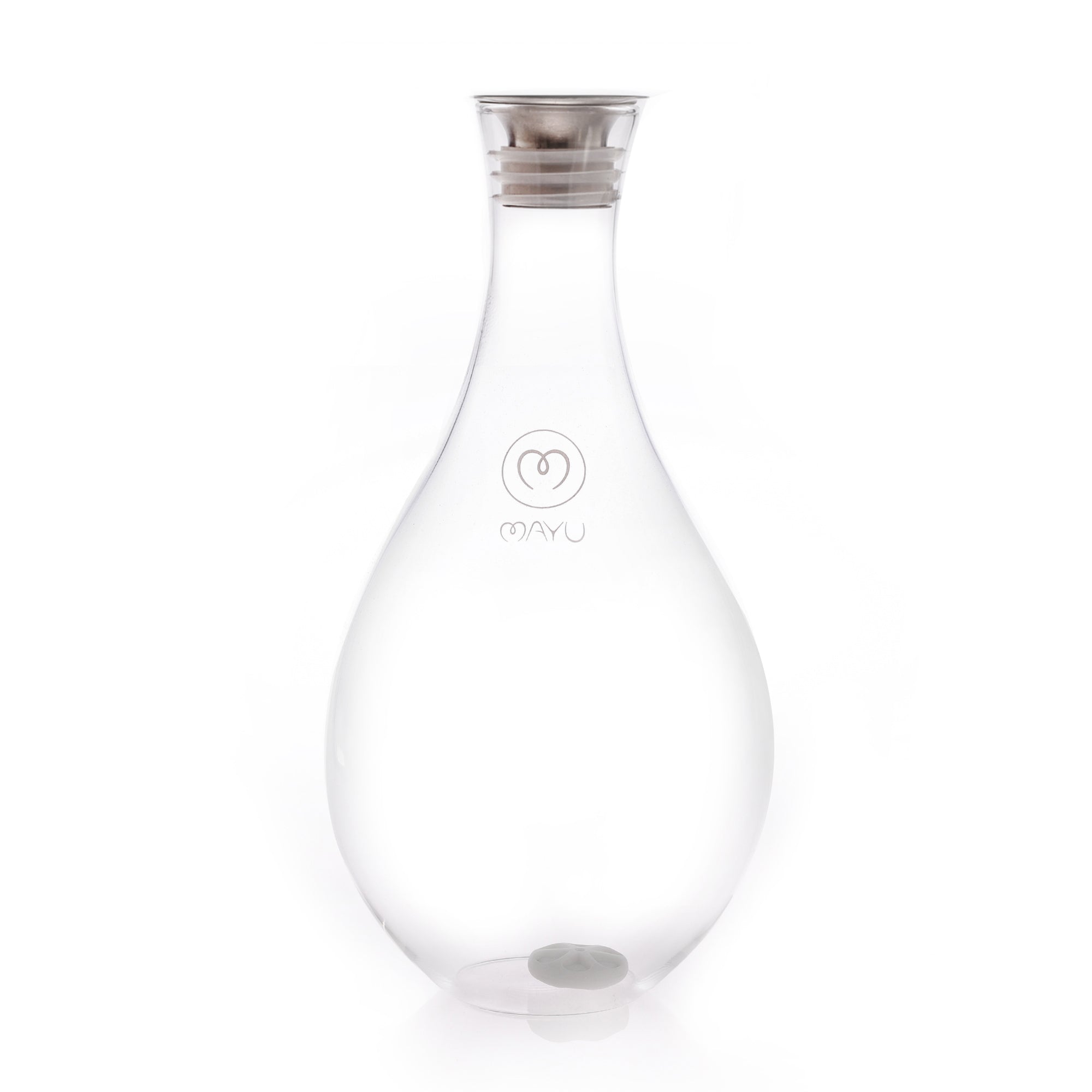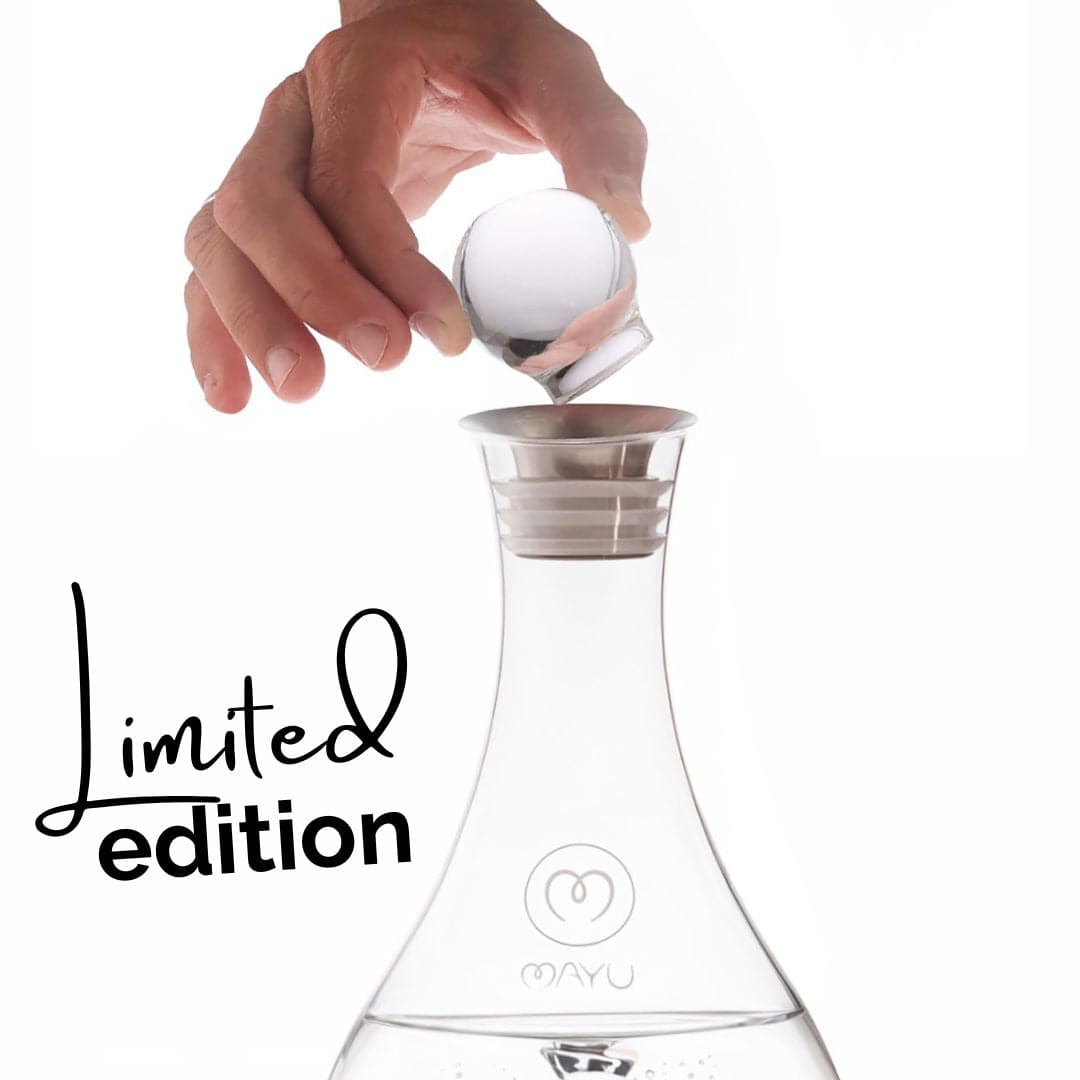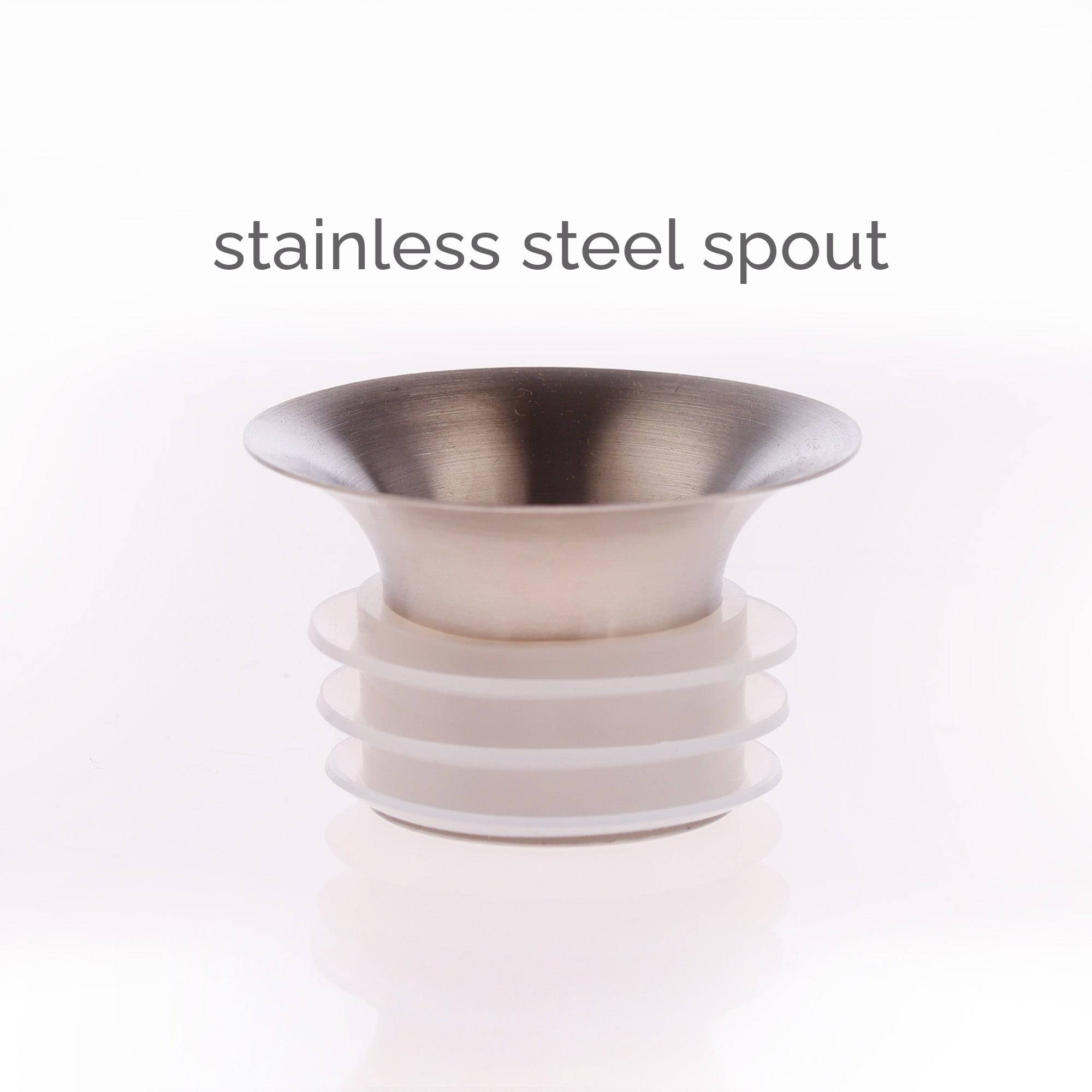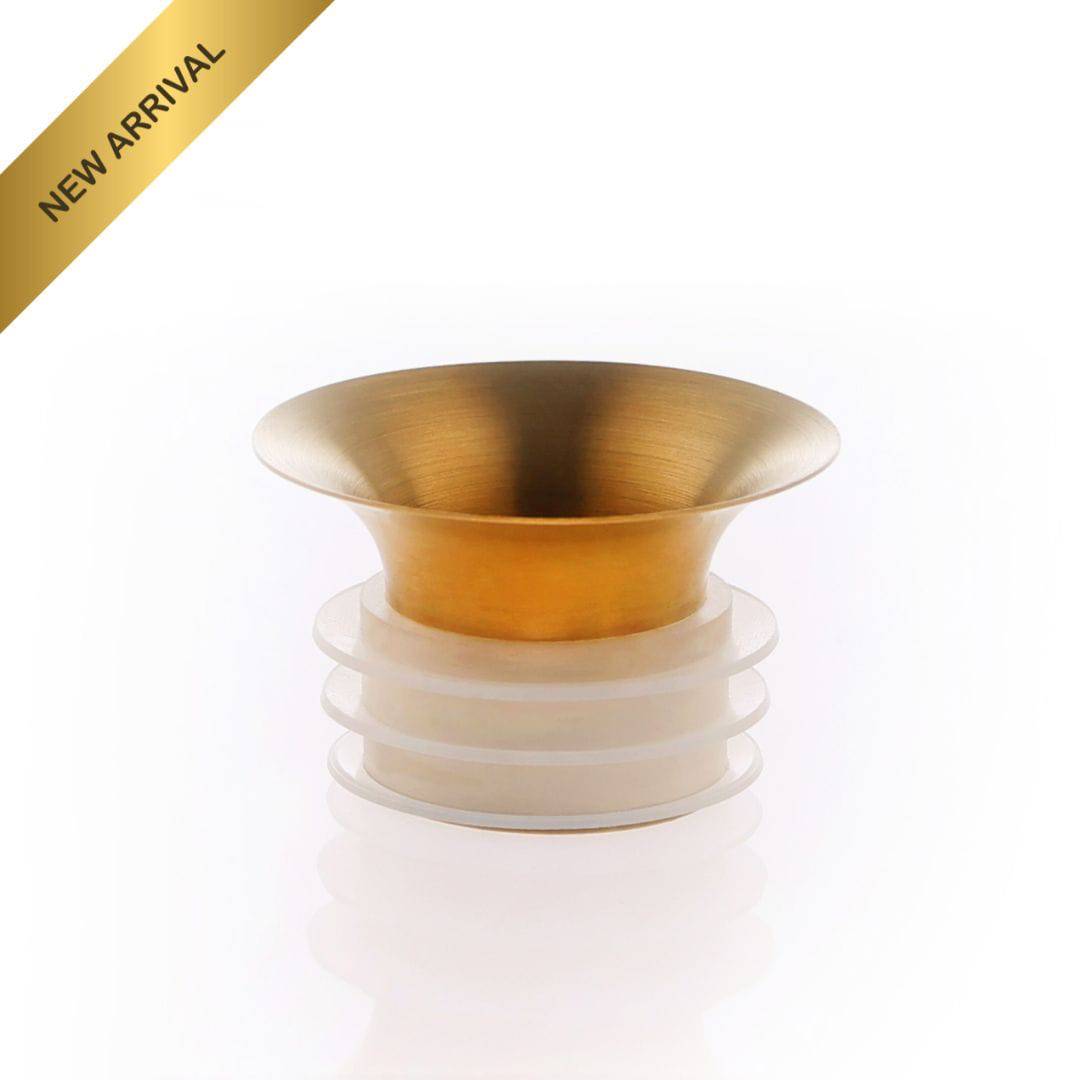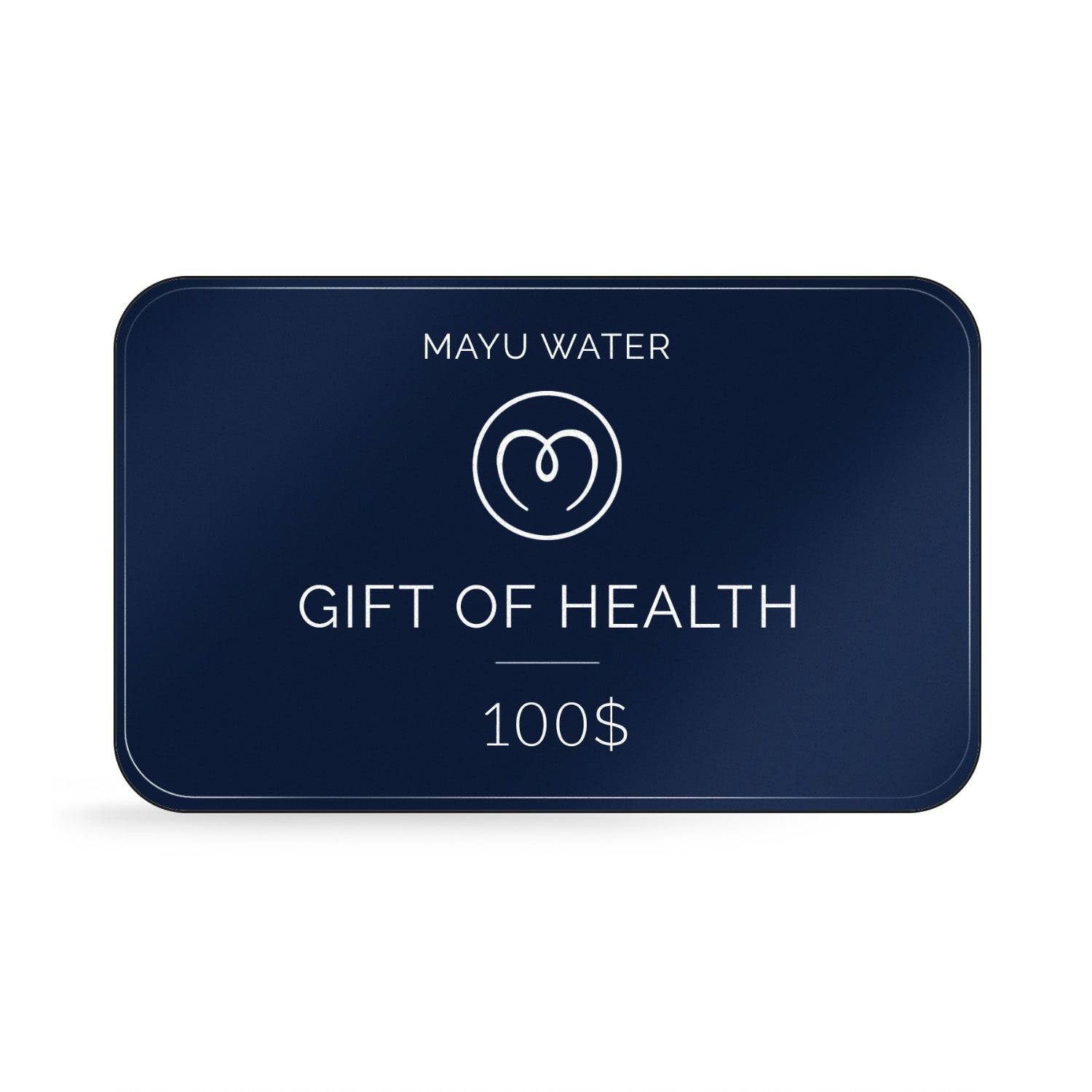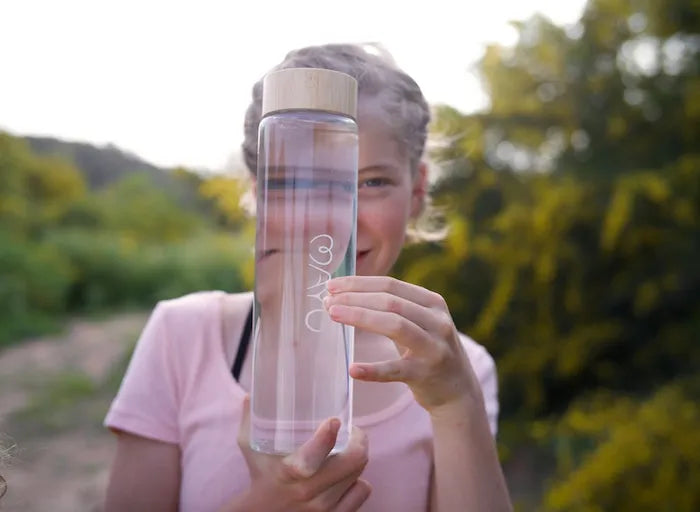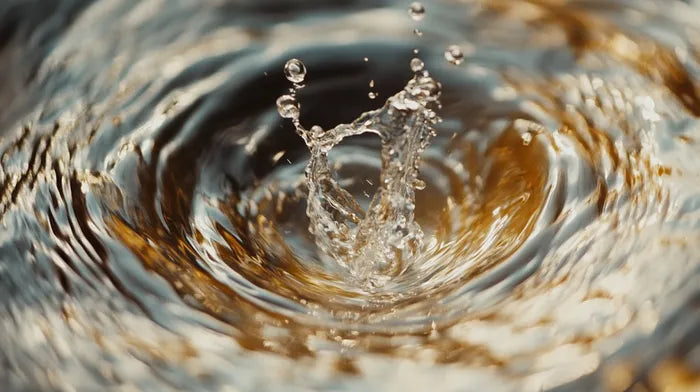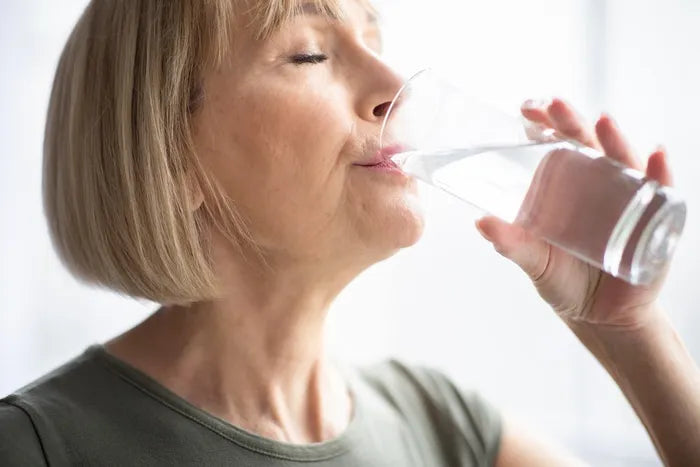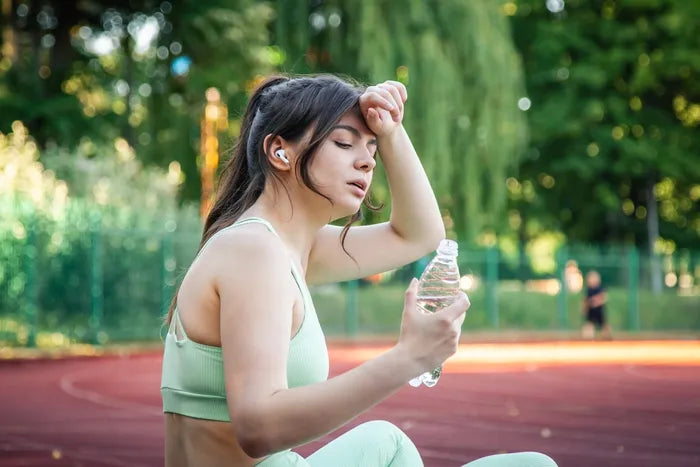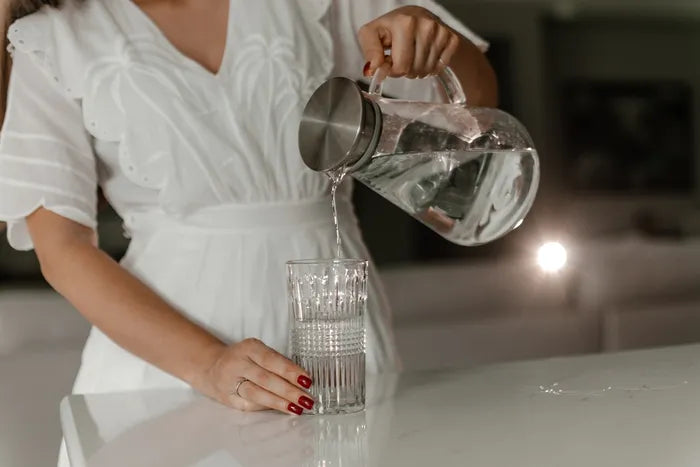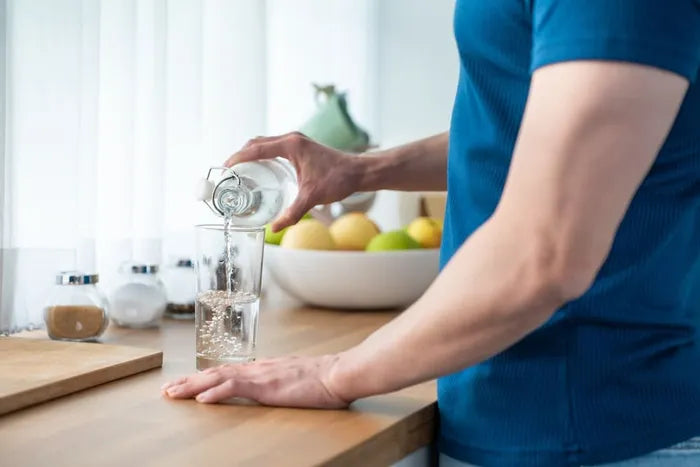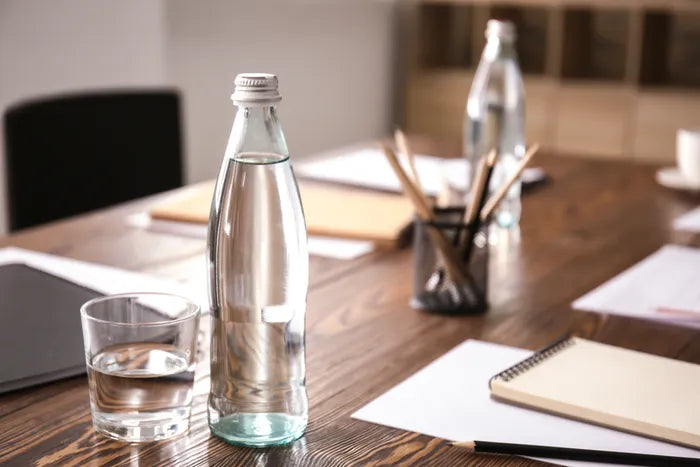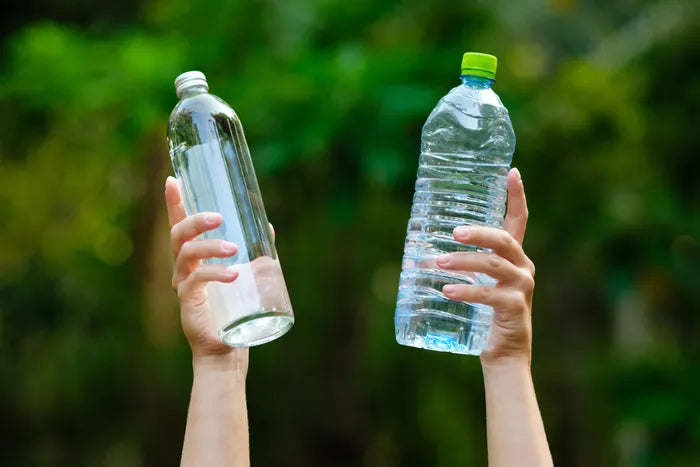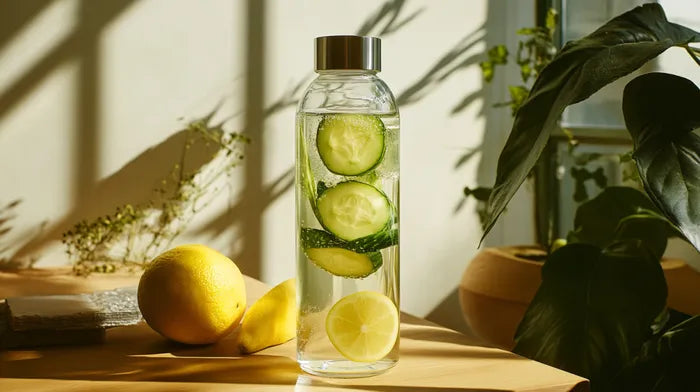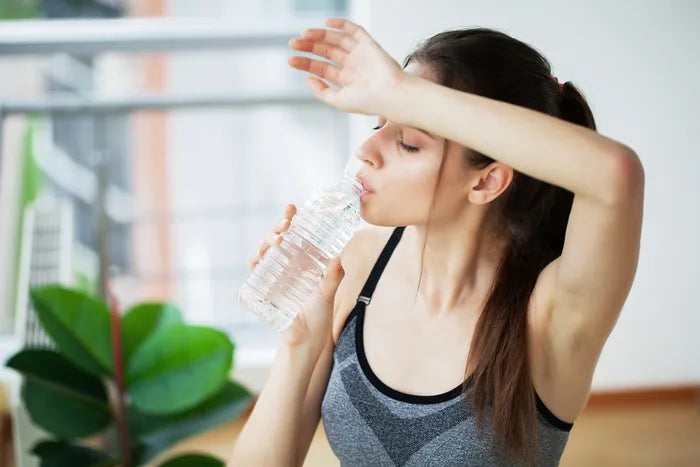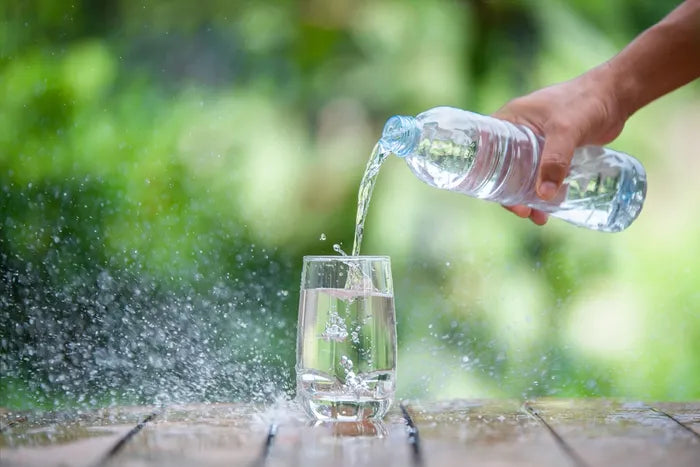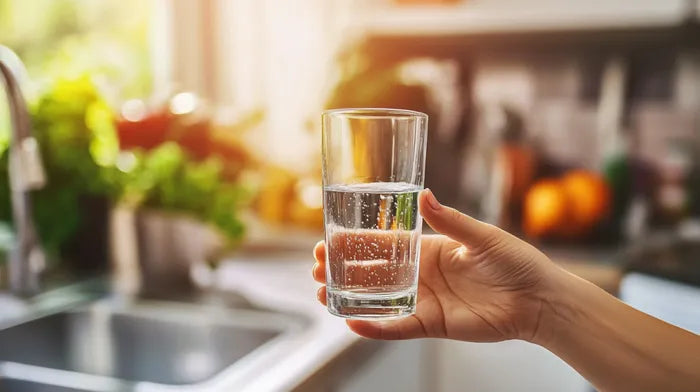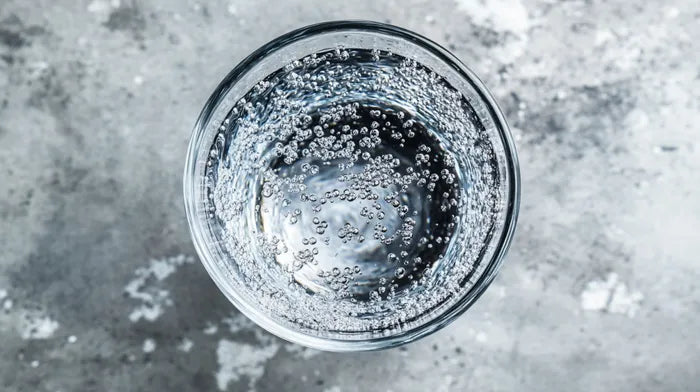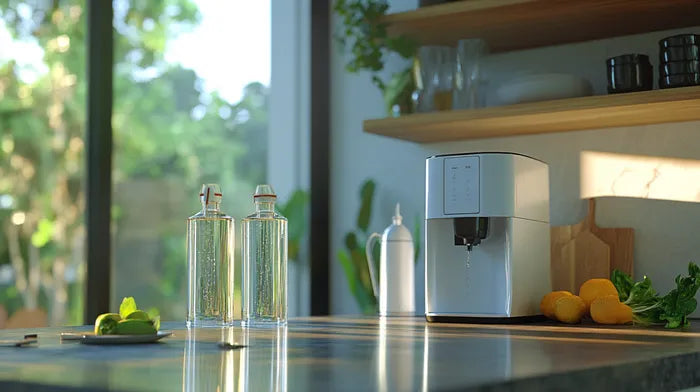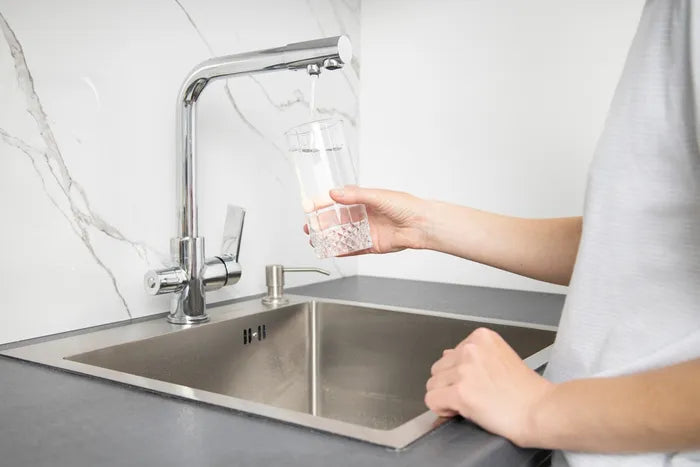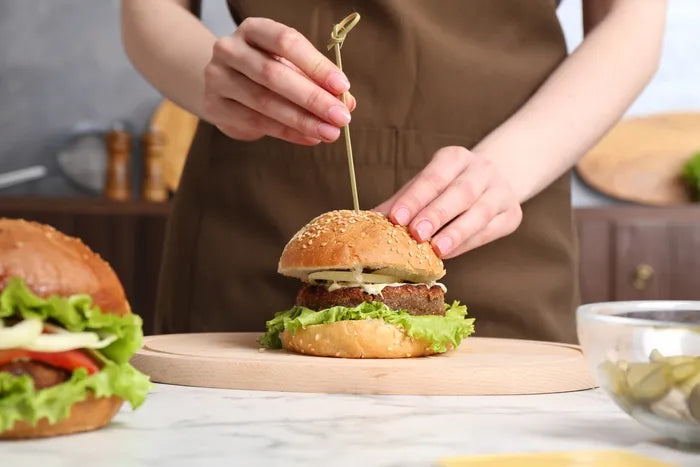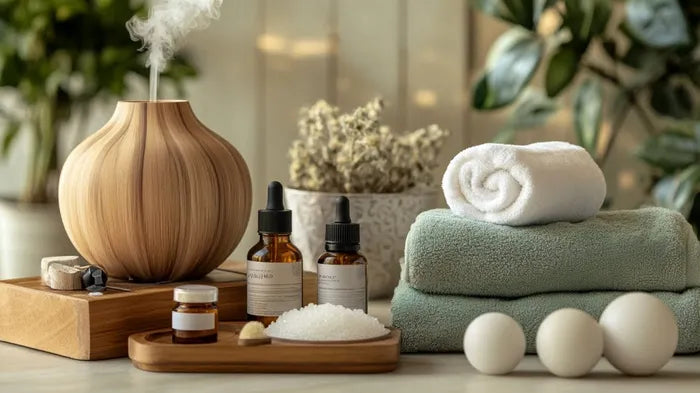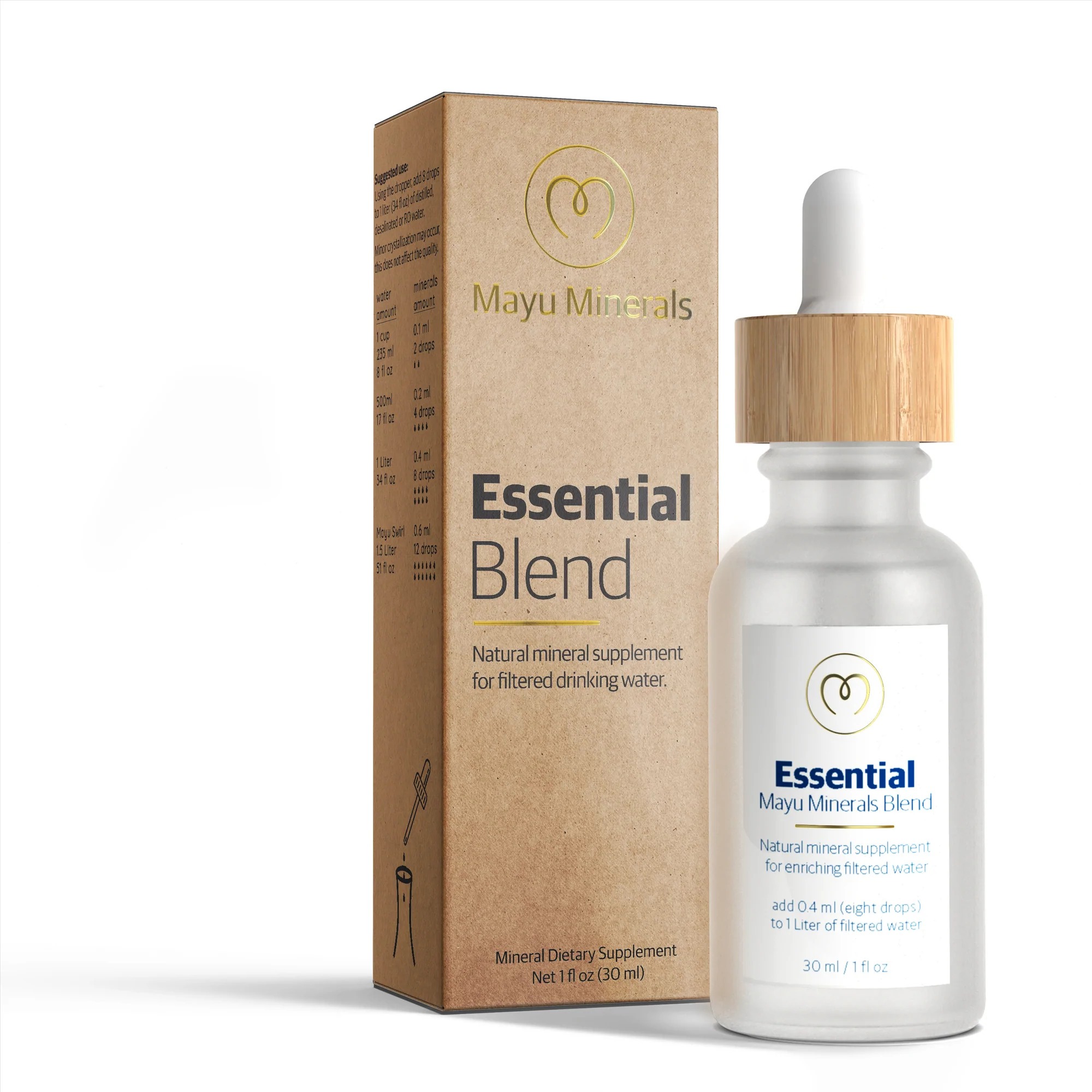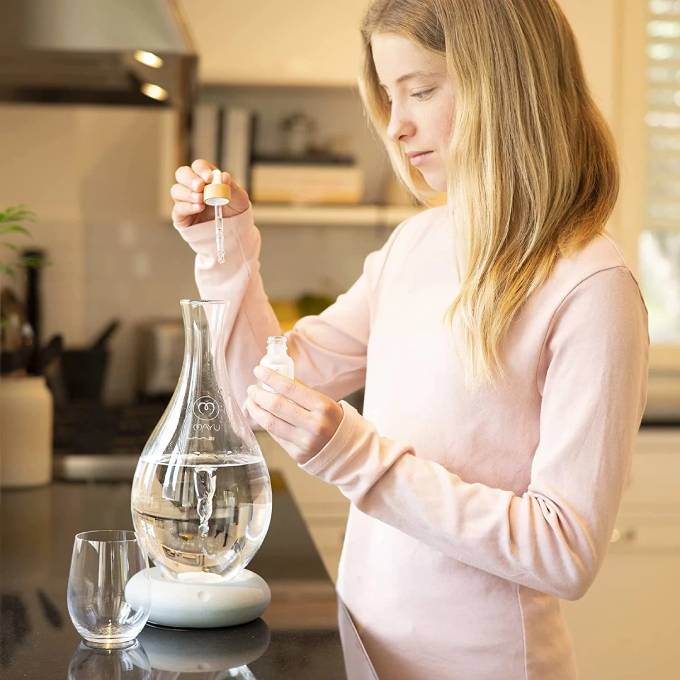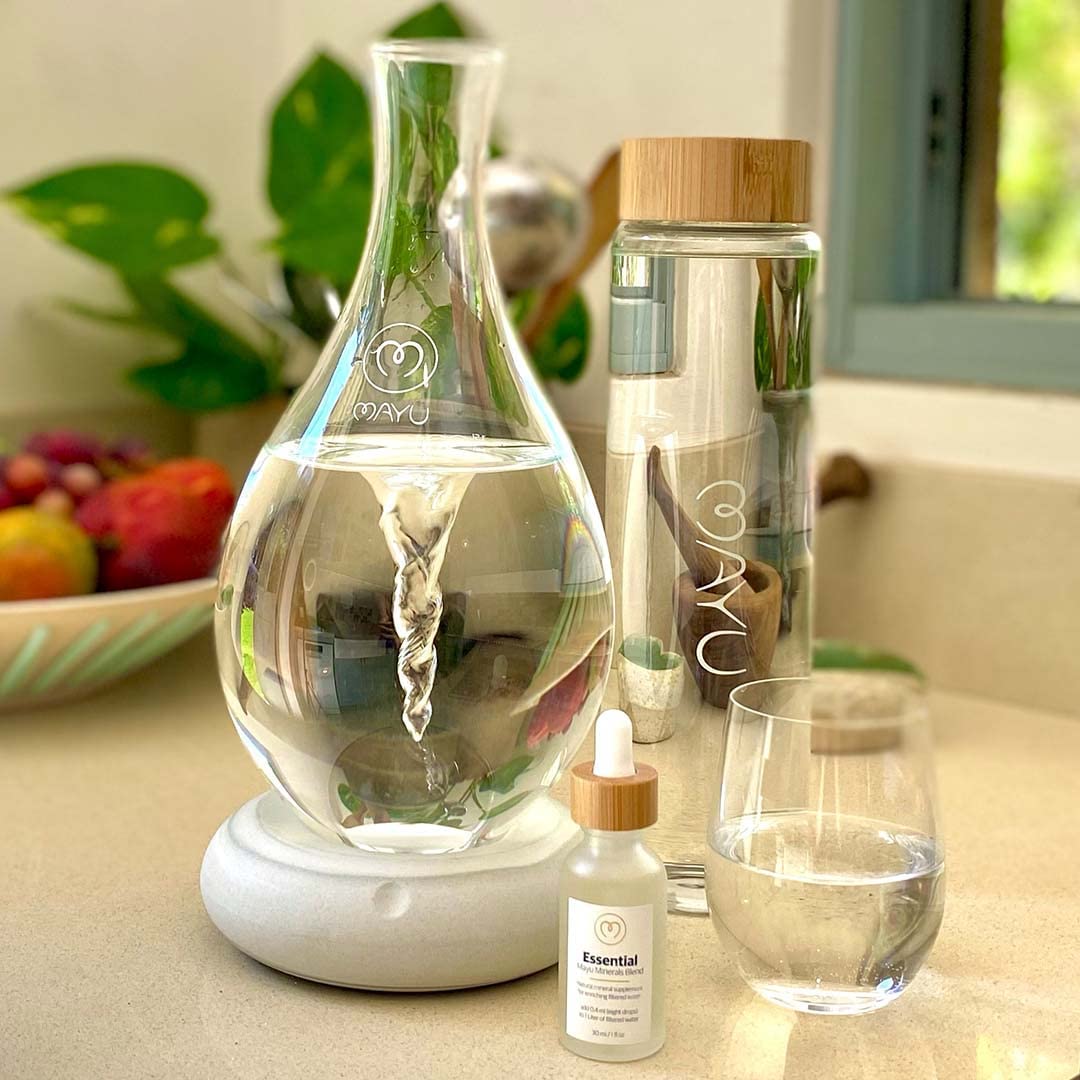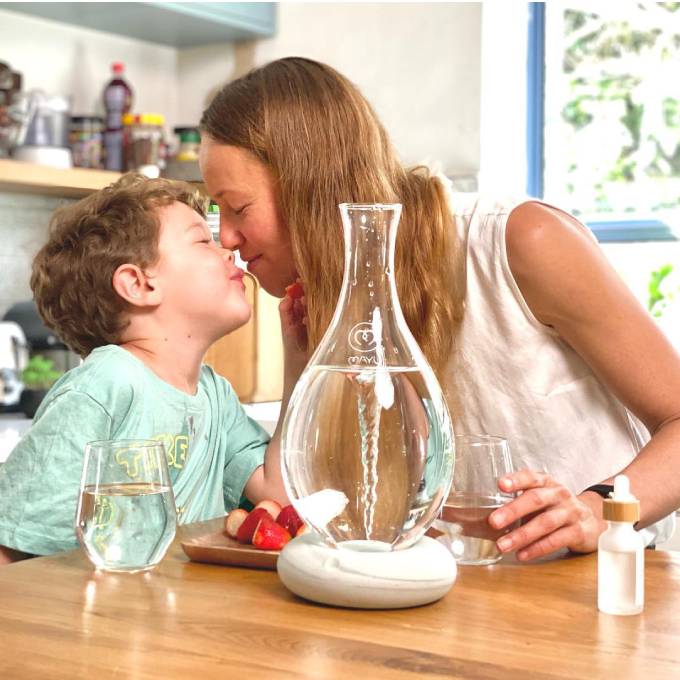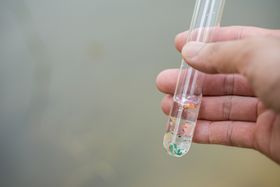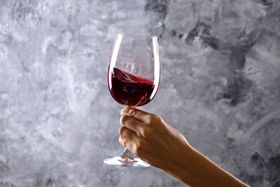5 Simple Ways to Make Your Water More Hydrating
What if your water isn’t actually hydrating you? Discover the invisible gap in every sip—and the ways to turn that plain H2O into a thirst-quencher your cells crave
Updated May 29, 2025

The best way to increase hydration isn't simply guzzling gallons of water. It’s about optimizing how your body absorbs and uses that water—through smarter hydration strategies like balancing electrolytes and reducing diuretics.
The truth is, hydration isn’t just about quantity—it’s about quality. Plain water lacks electrolytes like sodium, potassium, and magnesium, which are crucial for helping your cells absorb and retain fluids.
The good news? By adding a few simple, natural ingredients and tweaking how you drink, you can unlock your water’s full potential.
» Make your water more hydrating naturally using the Full Cycle System
How Your Body Absorbs Water at the Cellular Level
Water moves into and through your body fascinatingly. When you drink it, your cells actively pull the water in through a process called osmosis [1].
Your cells have specialized proteins called aquaporins that act like microscopic water highways. These channels allow water to flow quickly into your cells to where it's needed most, ensuring you stay properly hydrated at the cellular level.
This cellular water balance affects everything from how well you digest food to how effectively your brain functions. Your body has evolved these mechanisms to make the most of every drop you drink.
Your body relies on electrolytes—especially sodium and potassium—to control where water goes when it's in the cells. These minerals work through the sodium-potassium pump to balance fluids inside and outside the cells.
The electrolyte balance in your system is essential for proper hydration. Without it, the water will simply pass through your digestive system without entering your cells, where it's needed most.
» Learn to hydrate to improve your digestion
5 Best Ways to Increase Hydration
1. Add Electrolytes to Your Water
When you add electrolytes to your drinking water, you're giving your body the tools it needs to absorb and retain moisture more efficiently. This strategy is absolutely vital after heavy sweating during exercise or while fighting an illness with a fever or digestive issues.
You have several practical options to boost your electrolyte intake:
- Use natural electrolyte drops that are sugar and additive-free
- Add a small pinch of sea salt to your water bottle
- Choose naturally mineral-rich water sources
2. Infuse Water with Fruits and Herbs
Homemade drinks like water with lemon, cucumber, berries, mint, or basil deliver natural vitamins, minerals, and antioxidants to your cells.
For example:
- Citrus fruits have a small but helpful vitamin C and potassium dose, which balances electrolytes. Plus, the gentle acidity can make plain water more appealing and easier to sip throughout the day.
- Fresh herbs like mint and basil contain elements that can improve digestion and support healthy circulation. This benefits your body by making it well-equipped to transport water to your cells.
- Cucumber is another good addition. It contains silica and magnesium, which can help hydrate skin and support cells during water transport.
- Finally, coconut water is naturally packed with potassium and sodium [2]. As we discussed earlier, these minerals can help your body absorb water more effectively through the sodium-potassium pump.
3. Drink Water at Cool (but Not Cold) Temperatures
Water temperature affects how your body hydrates and how much you're likely to drink, and cool water 10-15°C (50-59°F) hits the sweet spot for optimal absorption. Your body can process this temperature faster than ice-cold or hot water, moving it freely from your stomach into your bloodstream.
You'll also find that cool water feels more refreshing, making it easier to drink consistently throughout the day. It naturally encourages you to take regular sips instead of waiting until you're already dehydrated.
Remember, very cold water might seem refreshing, but it actually constricts your blood vessels temporarily, slowing the absorption. Meanwhile, hot water, while soothing, doesn't typically satisfy thirst as effectively.
» Compare hot and cold water and find out which is more hydrating
4. Use Structured or “Energized” Water
"Structured water" refers to water that has an altered molecular arrangement. You can use various methods to create this effect, including:
- Vortexing (swirling water in specific patterns)
- Exposing water to magnetic fields
- Treating the water with specific sound frequencies
Structured water increases bioavailability and mimics water found in natural springs. In theory, restructured water molecules might align more effectively with your cell membranes, helping your cells absorb and use water.
If you're interested in exploring this method, you can use vortexing devices like the MAYU Swirl. But, these claims should be approached with a balanced perspective. The scientific community hasn't yet agreed on whether structured water offers significant advantages over regular filtered water.
We suggest you try the Full Cycle approach, which includes three steps:
- First, you'll clean your water using the reverse osmosis filter.
- You'll infuse it with electrolyte drops to boost water transport through your cells.
- And finally, you'll use the water structuring device to arrange the molecules and boost your hydration.
5. Include a Small Amount of Natural Sugar or Carbohydrates
Did you know that a tiny bit of natural sweetness can actually help your body absorb water more effectively?
It actives microscopic helpers in your body called sodium-glucose transporters. They grab onto sodium, and because water likes to follow sodium, it gets pulled into your bloodstream faster.
Interestingly, this is exactly how those oral rehydration solutions you might have heard about work! The secret, though, is to keep it small.
Just a teaspoon of honey or a splash of fruit juice in your glass of water can boost your hydration without loading you up with extra calories or causing a big spike in your blood sugar. You might find this especially helpful after you've been exercising or when you're recovering from the flu.
» Check out the best drinks to have when recovering from cold or flu
Comparing Methods for Boosting Hydration
Structured Water vs. Natural Sources
You might have heard about some interesting ideas around changing the very structure of your water—things like vortexing it or using magnets—with the hope that it helps your body absorb it more effectively.
The idea behind this is quite intuitive: if the water molecules could somehow line up more like the water that's already inside your own cells, it might just slip into your system more easily.
On the other hand, when you consider adding electrolytes or even just a tiny bit of natural sugar to your water directly supports your body's natural mechanisms for balancing fluids.
Mineral Drops vs. Fruit & Herb Infusions
Mineral Drops are more effective than simple fruit or herb infusions for boosting hydration, especially after exercise, in heat, or during illness.
They have precise concentrations of sodium, potassium, magnesium, and sometimes glucose, which directly support water absorption through osmotic gradients and active transport in the intestines.
On the other hand, fruit or herb infusions offer mild hydration support through small amounts of vitamins, antioxidants, and trace minerals, but lack the electrolyte density needed for quick rehydration.
Optimizing Hydration for Different Situations & Age Groups
1. Endurance Exercise (e.g., long-distance running, cycling)
When you're exercising intensely for several hours, your body faces significant fluid and electrolyte challenges. Your sweat losses require a strategic approach to hydration.
How to Stay Hydrated:
Instead of plain water, opt for electrolyte-enhanced beverages containing:
- Sodium (300-700 mg/L)
- Potassium
- Small amounts of glucose (4-8%)
You should also:
- Pre-hydrate by drinking 2-4 hours before intense activity
- During exercise you need water, so drink 400-800 mL per hour while adjusting based on your personal sweat rate
- Monitor your body weight before and after workouts to understand your unique fluid needs
Note: Avoid drinking only plain water during extended exertion. This can actually dilute your blood sodium levels, leading to hyponatremia—a condition where your cells swell due to improper fluid balance.
2. Illness Recovery (Especially Gastrointestinal Issues)
When you're sweating hard for hours—whether it’s during intense training, long-distance hiking, or endurance sports—you're not just losing water. You're also losing critical electrolytes, especially sodium and potassium.
Replacing both fluids and electrolytes is essential to stay hydrated, maintain performance, and avoid serious issues like hyponatremia (low blood sodium).
How to Stay Hydrated:
- Reach for the Right Drink: Go for electrolyte fluids with sodium (300–700 mg per liter) and potassium and a bit of glucose (4–8%)
- Match Intake to Sweat Loss: Aim for 400–800 mL of fluids per hour during sustained effort. Adjust based on how much you're sweating.
- Preload Before You Go: Drink extra fluids 2–4 hours before starting prolonged or intense activity.
- Skip Plain Water During Endurance Events: Drinking only water over long periods can dilute blood sodium levels, increasing the risk of hyponatremia. Balanced fluids are safer and more effective.
» Find out how to drink more water when it's a struggle
3. Hot Weather or Heat Exposure
When you're sweating more—especially in hot, humid conditions—you're not just losing water. You're also losing salt and magnesium, which can increase your risk of dehydration, muscle cramps, and heat stress.
How to Stay Hydrated:
- Hydrate smarter: Increase your water intake by 20–30%. Choose cool water (10–15°C) for better absorption and body temperature regulation.
- Don’t skip electrolytes: Include drinks with sodium and magnesium, or lightly salt your food. Mineral-rich water can also help replenish what you're losing through sweat.
- Dress for the heat: Wear loose, breathable clothing to stay cooler.
- Plan wisely: Schedule outdoor activities for cooler times of day, like early morning or evening.
- Stay ahead of it: The CDC emphasizes that acclimatizing to heat and staying ahead on hydration are two of the most effective ways to prevent heat-related illness.
» Learn to stay hydrated in hot weather
4. High Altitude Exposure (e.g., hiking, skiing above 2,000 m)
At higher altitudes, your body loses more water than usual—and often faster than you realize. The air is drier, so you exhale more water with every breath.
Cold temperatures can increase urination (a process called altitude diuresis), and your thirst cues tend to decrease. Together, these changes put you at greater risk of dehydration.
How to Stay Hydrated:
- Drink More—Consistently: Aim to increase your fluid intake by 1 to 1.5 liters per day above your normal needs. Sip throughout the day, even if you’re not feeling thirsty.
- Don’t Forget Electrolytes: Your body loses more sodium at altitude, especially through urine. Include sodium- and potassium-rich fluids, such as broths or electrolyte drinks.
- Warm Up Your Fluids: Cold drinks can suppress thirst even more. Warm herbal infusions—like ginger, lemon, and honey—are soothing and help keep you sipping.
- Consider Glucose-Electrolyte Solutions: Some evidence from high-altitude mountaineering supports using these to maintain hydration and energy levels.
- Watch Your Pee: One of the easiest ways to monitor hydration is by checking your urine. Pale yellow and regular urine is a good sign you’re on track.
» Discover the best ways to check for dehydration at home
5. Age Groups
| Group | Why It Matters | What You Can Do |
|---|---|---|
| Children | Higher water needs per body weight; quick to dehydrate, especially when sick. | ∙Use oral rehydration solutions during illness. ∙ Offer fruit-infused or lightly flavored water ∙Avoid sugary drinks |
| Seniors | Reduced thirst sensation and kidney function. | ∙Sip fluids regularly—even without thirst ∙Choose warm or room-temp drinks ∙Include potassium-rich foods (bananas, cucumbers) |
| Pregnant Women | Increased fluid needs for blood volume and amniotic fluid. | ∙ Aim for 2.3–2.5L fluids daily ∙ Add electrolytes and magnesium to prevent swelling and cramps ∙ Choose coconut water, lemon water, fruits |
» Find out if drinking more water can help with allergies
How to Choose a Hydration Product That Actually Works
When you're looking at products that promise to boost hydration, it's smart to go beyond the marketing and focus on what really matters.
1. Check the ingredients
Look for scientifically supported electrolytes like sodium, potassium, magnesium, and a bit of glucose—similar to what you'd find in medical-grade oral rehydration solutions. These are the ingredients that actually help your body absorb and retain fluids.
2. Prioritize transparency
A trustworthy product will clearly list what’s inside and in what amounts. Bonus points if it's been third-party tested—this adds an extra layer of confidence in both quality and safety.
3. Look for reputable backing.
Formulas based on guidelines from respected bodies like the World Health Organization, American College of Sports Medicine, or International Society of Sports Nutrition are more likely to be effective.
4. Be skeptical of buzzwords.
Terms like “alkaline,” “structured,” or “energized” water might sound impressive, but without peer-reviewed evidence, they’re often just marketing fluff.
5. Watch out for sugar and additives.
If your goal is healthy hydration, skip products overloaded with added sugars, artificial flavors, or preservatives. They can do more harm than good.
6. Do your own digging.
Research ingredients and claims. Brands that cite clinical studies or link to published research are generally more trustworthy—and more likely to offer a product that works.
» Check out the best water types to drink and recover from dehydration
Quench Your Thirst for Good
You don’t need to drown in endless glasses of water to feel truly hydrated. By bridging the gap between what you drink and what your body absorbs, you can finally break free from the cycle of dehydration.
So what’s the best way to increase hydration? It’s combining clean water with natural additives like a pinch of salt or fresh lemon—and being consistent about when and how you hydrate.
Pair these tweaks with mindful sipping (no more marathon chugging!), and you’ll unlock hydration that sticks—leaving dry skin, fatigue, and relentless thirst in the rearview.
» Ready to change your relationship with water? Try the Full Cycle System
Disclaimer: The information published by Mayu Water is not a substitute for the expert knowledge, advice, and recommendations of trained professionals. We strongly recommend consulting with industry experts and primary or scientific sources before making any health, research-related, or other important decisions.

